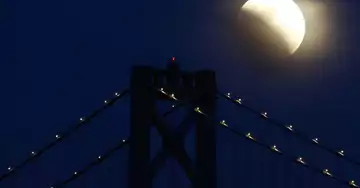A snapshot of the Terra blockchain is expected to take place later this week ahead of the launch of "Terra 2.0," also known as the rebirth of the Terra ecosystem after the implosion of the terraUSD (UST) stablecoin earlier this month.
Read this article in Spanish.
The revival plan will go ahead after a vote on Wednesday among the network's validators, which yielded a 65% approval.
Investors who coined more than 10,000 LUNA before the implosion of UST will receive the new tokens at regular intervals to avoid an immediate sale. At the beginning, more than 30% of the tokens would be released, and the remaining 70% would be released gradually over the course of two years. New tokens would be issued to these holders after six months.
Wallets with more than one million LUNA or USTs before UST unbundling would have to wait more than a year before receiving tokens, with a subsequent four-year consolidation period, according to the reactivation plan.
A snapshot - a record of the state of a blockchain at a given point in time - will allow Terra to send newly issued LUNA tokens to holders of old LUNA tokens. This would theoretically allow old holders to recover some of their lost investment value while incentivizing them to use the new blockchain.
The snapshot of Terra 2.0 is expected on May 26. "Based on block timing, the post-snapshot block, 7,790,000, could occur as early as May 26, 2022, 16:20:00 UTC," Terra's developers said in a statement Tuesday.
"The supply at emergence is much lower than anyone could have predicted, about 116.7 million, rising to 182 million after one year," they added, addressing community concerns about an inflated lunar supply.
How the snapshot plan came about
UST lost its parity with the U.S. dollar in early May and fell as low as 7 cents in the weeks that followed, leading to a 99.7% drop in the price of related Luna tokens (LUNA) and the loss of more than $28 billion in Terra's decentralized financial applications (DeFi).
This led to a loss of confidence among LUNA investors and traders, and apparently even triggered public outrage in Korea, where Terra had a large community and some crypto funds recorded billions of dollars in losses.
Terra's often impetuous founder, Do Kwon, developed a revival plan in the days that followed, proposing a blockchain fork and an airdrop (a token distribution process) for holders affected by the UST implosion.
The plan aims to satisfy the population and restore their trust in the Terra ecosystem.
"Forking" a blockchain refers to creating a new blockchain, prepending the data from the old blockchain to the new one. However, Terra's developers have stated that "Terra 2.0" will be a completely new project, meaning that no data will be transferred from the current chain to the new chain.
The revival plan, despite being approved by Terra's network validators, went live despite the results of a preliminary online survey about a hard fork plan finding minimal support among community members.
Some 92% of more than 6220 voters voted against the change in an earlier online poll, with the most popular responses calling for "no fork," as previously reported.
LUNA prices have risen more than 6.2% in the last 24 hours.
This article was translated by Marina Lammertyn.

